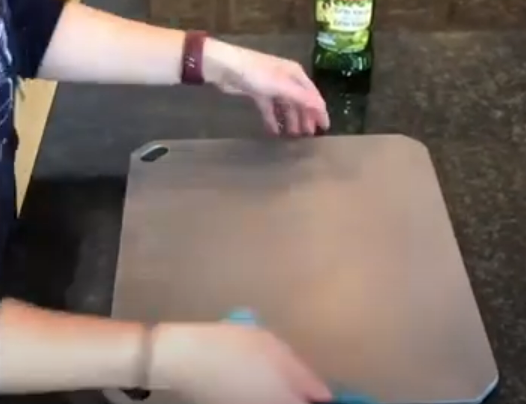To season pizza steel, apply a thin layer of oil and heat it in the oven. Proper seasoning enhances the durability and non-stick properties, making it perfect for baking.
Pizza steel is an excellent tool for achieving crispier crusts and evenly cooked pizzas. However, to get the most out of your pizza steel, proper seasoning is crucial. By following a few simple steps, you can ensure that your pizza steel is well-seasoned and ready to use for delicious homemade pizzas.
We will discuss the process of seasoning pizza steel to help you achieve the best results in your pizza-making endeavors. Let’s dive into the details of how to season pizza steel effectively for a perfect homemade pizza experience.
Why Seasoning Pizza Steel Is Important
To achieve optimal non-stick performance and prevent rusting, seasoning your pizza steel is crucial. Seasoning creates a natural, non-stick surface and enhances the steel’s durability. To season your pizza steel, apply a thin layer of oil and bake it to form a protective coating, ensuring delicious, evenly-baked pizzas every time.
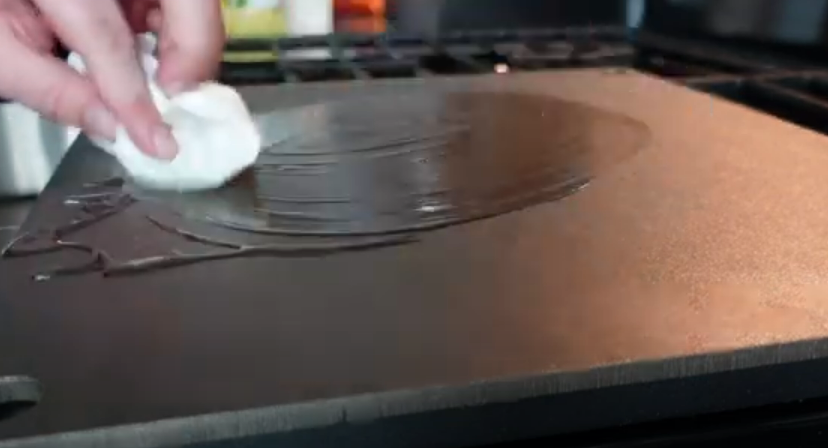
The Source: How Long to Preheat Pizza Steel
Enhances Non-stick Surface
Applying oil to your pizza steel creates a protective layer that prevents sticking.
Improves Heat Retention
Seasoning ensures even heat distribution for a perfectly cooked pizza crust.
Preparing Pizza Steel For Seasoning
To season your pizza steel, start by prepping it properly. Clean the steel thoroughly to remove any residue, then apply a thin layer of vegetable oil. Place it in a preheated oven and bake it for an hour at a high temperature.
This process will enhance the non-stick properties of the steel and improve the flavor of your pizzas.
Clean The Surface
Before seasoning, ensure the pizza steel is clean and free from any dirt or residues.
- Use a mild dish soap
- Scrub gently with a non-abrasive sponge
Dry Thoroughly
After cleaning, dry the pizza steel thoroughly to prevent rust.
- Pat dry with a clean cloth
- Air-dry completely before seasoning
Choosing The Right Oil
To season pizza steel effectively, choose a high-smoke oil like grapeseed or vegetable oil. Heat the steel with a thin layer of oil, allowing it to bond with the surface for optimal non-stick properties. Repeat the process to enhance the steel’s durability and the flavor of your pizzas.
When it comes to seasoning your pizza steel, choosing the right oil can make all the difference. Not only does it impact the way your pizza cooks but also adds flavor to your crust. In this section, we will discuss two categories of oils that are best for seasoning your pizza steel: high-smoke-point oils and flavorful oils.
High-smoking-point Smoke Point Oils
High-smoke point oils are ideal for seasoning your pizza steel as they can withstand the high temperatures required for baking a perfect pizza. These oils do not break down easily, ensuring that your pizza steel remains well-seasoned without imparting any off-flavors to your pizza. Some popular high smoke point oils to consider are:
- Avocado oil: With a smoke point of around 520°F, avocado oil is a great choice for seasoning your pizza steel. It has a mild flavor that won’t overpower your pizza toppings.
- Grapeseed oil: Another oil with a high smoke point (around 420°F), grapeseed oil has a neutral taste that won’t interfere with the flavors of your pizza. It also helps create a non-stick surface on your pizza steel.
- Peanut oil: Known for its high smoke point of approximately 450°F, peanut oil works well for seasoning your pizza steel. It adds a subtle nutty flavor to your crust, enhancing its taste.
Flavorful Oils
If you’re looking to infuse your pizza crust with additional flavors, you can opt for flavorful oils that add a unique taste profile to your pizza. These oils have lower smoke points but can still be used for seasoning your pizza steel. Here are some flavorful oils to consider:
- Extra virgin olive oil: Although it has a lower smoke point (around 375°F), extra virgin olive oil is beloved for its rich and distinctive flavor. Brushing a thin layer of this oil on your pizza steel can enhance the taste of your crust.
- Garlic-infused oil: For garlic lovers, garlic-infused oil can bring a delicious garlicky aroma to your pizza. It’s best to make your own by combining olive oil and fresh garlic cloves. Just remember that the smoke point will vary depending on the type of oil used.
- Herb-infused oil: Adding herbs like rosemary, thyme, or basil to a good quality olive oil can create a flavorful infusion. Brushing your pizza steel with this oil before baking will impart a delightful herby taste to your crust.
Remember to apply a thin layer of oil to your pizza steel before seasoning it in the oven. This will create a barrier that prevents your dough from sticking and helps achieve a crisp and golden crust. Experiment with different oils to find your favorite flavor combinations and enjoy a perfectly seasoned pizza steel that takes your homemade pizzas to a whole new level.
Applying Oil To Pizza Steel
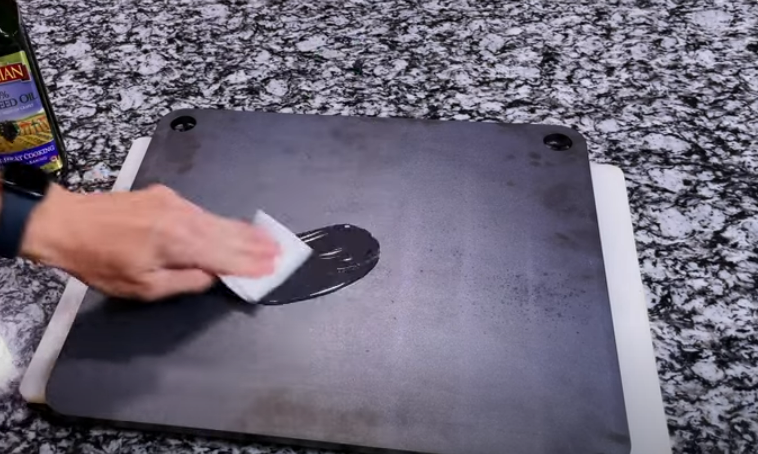
When it comes to perfecting your homemade pizza, seasoning your pizza steel is an essential step. Applying oil to the pizza steel before each use not only prevents sticking but also helps develop a nice, crispy crust. Whether you prefer pouring or brushing the oil, coating the entire surface is crucial for achieving consistent and delicious results.
Pouring Or Brushing
There are two main methods for applying oil to your pizza steel: pouring and brushing. Each method has its advantages, so choose the one that works best for you.
Coating The Entire Surface
Ensuring that the entire surface of the pizza steel is evenly coated with oil is key to preventing the dough from sticking and achieving an even bake. Take the time to thoroughly coat the entire surface before preheating the steel to ensure the best results.
Baking And Cooling
To season pizza steel, start by applying a thin layer of oil, then bake the steel at high heat. Let it cool completely before wiping the excess oil off. Repeat this process a few times for a perfect, non-stick surface.
Preheat The Oven
To begin the seasoning process, preheat your oven to the high temperature recommended for your pizza steel. This will allow the steel to evenly absorb the seasoning oil, resulting in a more non-stick surface.
Bake The Pizza Steel
Place the pizza steel in the preheated oven and let it bake for about one hour. It’s essential to ensure that the entire surface of the steel is covered with a thin layer of oil. This helps in creating a natural non-stick coating, enhancing the flavor and texture of your pizzas.
The Source: How to Use Baking Steel for Pizza
Cooling And Repeating The Process
After baking, turn off the oven and allow the steel to cool inside the oven. It’s crucial to let the steel cool completely before handling it to avoid any burns. Once cooled, you can repeat the seasoning process, applying oil and baking the steel again to continue building its non-stick properties.
Maintaining Seasoned Pizza Steel
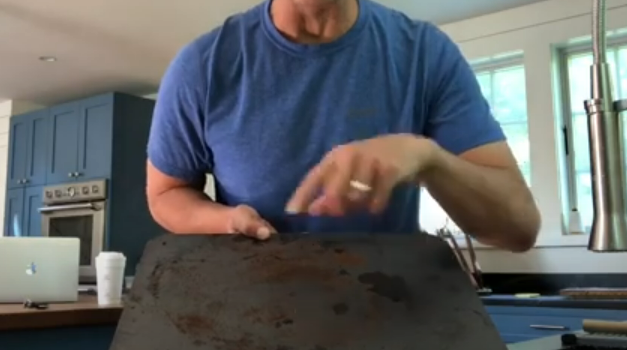
Maintaining seasoned pizza steel is essential to ensure that your pizzas always turn out perfect. Not only does it help to keep your pizza steel in excellent condition, but it also ensures that your pizzas cook evenly and develop that delicious, crispy crust. Here are some easy steps to follow for maintaining your seasoned pizza steel.
Avoid Soap And Water
When it comes to cleaning your pizza steel, it’s best to avoid using soap and water. Soap can strip away the seasoning that you’ve worked so hard to build up on your steel. Instead, simply wipe away any food residue using a damp cloth or paper towel.
Remove Food Residue
To remove any stubborn food residue that might be stuck on your pizza steel, you can use a scraper or a brush specifically designed for cleaning pizza steel. Gently scrape or brush away the residue, being careful not to scratch the surface of the steel. Once the residue is removed, wipe the steel clean with a damp cloth.
Re-season As Needed
Over time, the seasoning on your pizza steel may start to wear off, especially if you use it frequently. If you notice that your pizzas are sticking to the steel or if the crust isn’t as crispy as it used to be, it’s time to re-season your steel. Re-seasoning involves applying a thin layer of oil to the surface of the steel and heating it in the oven for a certain period. Consult the manufacturer’s instructions for the recommended re-seasoning process for your specific pizza steel.
The Source: How Thick Should a Pizza Steel Be
By following these simple steps, you can maintain the seasoned surface of your pizza steel, ensuring that every pizza you make is cooked to perfection. Remember to avoid soap and water, remove any food residue, and re-season as needed to keep your pizza steel in top shape.
Benefits Of A Well-seasoned Pizza Steel
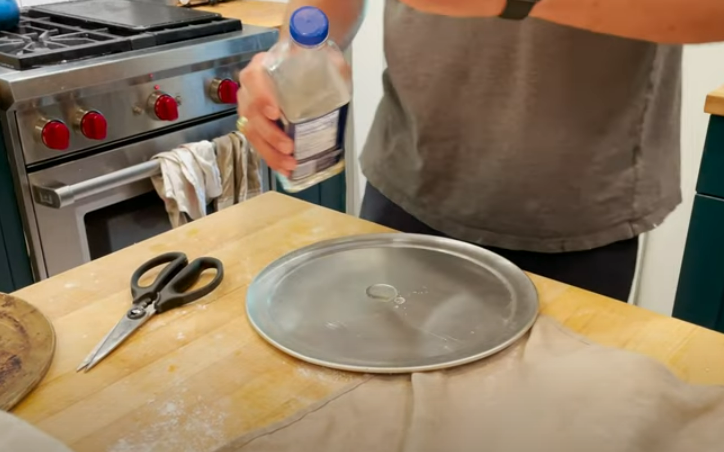
Seasoning your pizza steel is a crucial step to achieving delicious homemade pizzas. Well-seasoned pizza steel offers several benefits that enhance the overall pizza-making experience.
Superior Crust Texture
A well-seasoned pizza steel creates a superior crust texture due to the natural non-stick surface that develops over time. The crust becomes crispy on the outside while remaining tender inside, resulting in a perfect balance of textures that elevates your pizza.
Optimal Heat Distribution
Properly seasoned pizza steel ensures optimal heat distribution. This means that the steel will heat evenly, allowing for a consistent bake each time. No more worrying about unevenly cooked pizzas.
Troubleshooting Common Seasoning Issues
To achieve optimal results when seasoning your pizza steel, it’s important to be aware of common issues that may arise during the process. By understanding how to troubleshoot these problems, you can ensure that your pizza steel is properly seasoned and ready for delicious pizza-making!
Sticky Surface:
If you find that your pizza steel has a sticky surface after seasoning, it may be due to applying too much oil. To resolve this, simply wipe the surface with a paper towel to remove excess oil. Re-season the steel with a thin layer of oil and bake it again to create a smooth non-stick surface.
Uneven Seasoning:
The uneven seasoning on your pizza steel can result in inconsistent cooking and potential sticking. To address this, scrub the steel with a gentle abrasive to remove any built-up residue. Apply a thin, even layer of oil and bake the steel again to ensure uniform seasoning across the surface.
Frequently Asked Questions For How To Season Pizza Steel
How Does Seasoning Pizza Steel Improve Its Performance?
Seasoning pizza steel prevents sticking, enhances flavor, and creates a non-stick surface.
Why Is It Essential To Season A New Pizza Steel?
Seasoning a new pizza steel prevents rust and corrosion and improves its non-stick properties.
What Is the Best Oil To Use For Seasoning Pizza Steel?
Use flaxseed or vegetable oil for seasoning pizza steel due to their high smoke point.
How Long Should I Season My Pizza Steel for Optimal Results?
Season your pizza steel for 1 hour at 400°F to create a durable, non-stick surface.
How Often Should I Re-season My Pizza Steel?
Re-season your pizza steel every few months or when it shows signs of wear to maintain its performance.
Conclusion
To conclude, seasoning your pizza steel is a crucial step to enhancing the flavor and achieving a crispy crust for your homemade pizzas. By following the simple steps outlined in this blog post, you can ensure that your pizza steel is seasoned properly and ready to be used for delicious pizza creations.
Remember, well-seasoned pizza steel will not only improve the cooking process but also prolong the longevity of your steel. Happy pizza-making!

